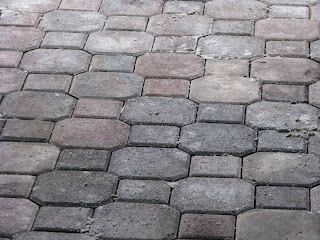Thursday, June 14, 2012
Monday, June 11, 2012
Friday, June 17, 2011
Tuesday, April 27, 2010
Sod Care
FAQ
How much fertilizer do I use, what type, and when should I fertilize the grass?
•Use 13-13-13 of any brand and 10 pounds per 1000 square feet, which works out to 5 pounds per pallet; you should fertilize as soon as you can to help the grass get established.
How much do I need to water the grass when I lay it?
•Water newly installed grass every day for the first 10 to 14 days, then every two to three days for a few weeks. Water should not be standing on the grass but soaked through to the ground below the grass. Usually watering an hour a day is plenty.
What do I use to kill chinch bugs?
•Normally you don’t need to do anything. St. Augustine always has chinch bugs but normally the St. Augustine grows faster than the chinch bugs can eat it so they are not a problem. Sometimes during a drought when the St. Augustine is not growing at its normal clip, it cannot outgrow the chinch bugs. At times like this you can use Bayer Advanced Multi- Insect killer to control them. Read the label for the proper rate of application.
I have circular brown spots in my yard. What is it and what do I do about it?
•Most likely it is a fungus called Brown Patch. The pathogens for Brown Patch and other fungi are always present in the sod and ground. You can take a sample from anywhere and find the pathogens that cause this and other diseases. Brown Patch starts showing up when you have wet conditions with water standing in puddles. Poor drainage or shade that keeps water from evaporating can cause water to stand in places and this is where Brown Patch starts appearing. The best solution is to correct the drainage situation. Brown Patch rarely kills the grass and it will re-grow when the conditions are corrected.
Can you over water grass?
•Yes you can. If water is standing in pools, then you have over-watered. Grass will wilt if water is left standing on it in the heat of the day. The grass cannot breathe and drowns when it is left in standing water. Grass weakened by standing water becomes more susceptible to diseases and other stresses (see previous question). Watering should leave the grass and soil beneath moist without standing water.
Tips Found at http://www.murffturf.com/
Monday, April 5, 2010
Thursday, February 25, 2010
Subscribe to:
Comments (Atom)























































